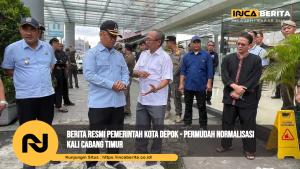International News: Stay Updated with the Latest International News

I still remember when I first became fascinated with international news about 15 years ago. I was traveling through Southeast Asia and found myself in a small café in Bangkok during a major political protest. The local coverage was extensive, but when I checked news outlets from home, the event barely registered. That disconnect—between what was life-changing for locals and what registered as important internationally—sparked my ongoing interest in how global news works and how we can stay genuinely informed.
Over the years, I’ve developed strategies for navigating the complex world of international news. Today, I’m sharing what I’ve learned to help you build a more comprehensive understanding of global events beyond the headlines.
Why International News Matters More Than Ever
In our interconnected world, events happening thousands of miles away can impact our daily lives in ways that weren’t possible even a decade ago. According to media studies research, our understanding of international events shapes everything from financial markets to public health responses and policy decisions.
The COVID-19 pandemic demonstrated this interconnectedness clearly. Information from Wuhan, China in late 2019 and early 2020 directly affected how quickly other countries prepared and responded. Those who paid attention to international news often had weeks of advance warning about what might be coming.
Beyond practical considerations, engaging with international news helps develop a more nuanced worldview. It challenges our assumptions, introduces us to different perspectives, and helps us understand the complex forces shaping our global society.
Common Challenges in Accessing Quality International News
Despite the importance of international news, several obstacles make it difficult to stay well-informed:
Media Bias and National Perspectives
All news organizations operate from particular cultural and national perspectives. American news outlets naturally view events through an American lens, just as Japanese or Brazilian outlets approach stories from their own cultural frameworks.
I learned this lesson vividly during the Brexit referendum. Following the coverage simultaneously through British, European, and American sources revealed dramatically different narratives and emphasis. British sources focused on domestic implications, EU outlets highlighted institutional concerns, while American coverage often simplified the situation into familiar partisan frameworks.
Declining Foreign Bureaus
Budget cuts have led many news organizations to close foreign bureaus and reduce international reporting staff. According to the American Journalism Review, the number of foreign correspondents employed by U.S. newspapers decreased by nearly 25% over the past two decades.
This means fewer journalists with deep local knowledge are reporting on complex international issues. Instead, we often get parachute journalism—reporters briefly dropping into crisis zones without understanding the context—or heavy reliance on wire services providing identical coverage across multiple outlets.
Language Barriers
Perhaps the most obvious challenge is language. Critical perspectives and nuanced reporting often exist in local languages that most of us don’t understand. While major global stories get translated, countless important regional developments never cross the language barrier.
During my time in Japan, I noticed how English-language coverage of Japanese politics missed crucial context and nuance that was abundant in Japanese-language sources. Even with excellent translation, certain cultural and historical references simply didn’t transfer.
Building Your International News Diet
After years of experimenting, I’ve developed a system for staying informed about global events that balances comprehensiveness with practicality. Here’s what works for me:
1. Start with Reliable Global Sources
Begin with trusted international news organizations that maintain substantial foreign bureaus and experienced correspondents:
- The Associated Press and Reuters: These wire services provide the backbone of much international reporting.
- BBC World Service: Offers broad global coverage with a network of local reporters.
- Al Jazeera English: Particularly strong on Middle East and Global South coverage.
- Deutsche Welle: Provides a European perspective with solid reporting on Africa and Asia.
- France 24: Strong coverage of Francophone countries.
I typically start my day with a quick scan of these outlets to get a baseline understanding of major developments.
2. Add Regional Specialists
Next, incorporate sources with deep expertise in specific regions:
- The Africa Report or Mail & Guardian for African affairs
- Nikkei Asia or South China Morning Post for Asian coverage
- Haaretz or The National for Middle East perspectives
- EU Observer for European Union developments
These specialized sources often cover important regional stories that global outlets might miss. During the early stages of several African political crises, I found that The Africa Report was providing detailed analysis weeks before mainstream Western media took notice.
3. Include Local Voices
Whenever possible, seek out English-language versions of local news sources from regions you’re interested in:
- The Times of India or The Hindu for Indian perspectives
- The Moscow Times for Russia
- Buenos Aires Times for Argentina
- The Rio Times for Brazil
During a period of political tension in Thailand, reading The Bangkok Post alongside international coverage revealed how foreign journalists were missing important cultural context that was dramatically changing how events were interpreted locally.
4. Leverage News Aggregators and Curators
Several services can help you efficiently access diverse perspectives:
- Ground News: Shows how the same story is reported across the political spectrum and in different countries.
- AllSides: Highlights different political perspectives on major stories.
- The Factual: Rates articles based on source quality, author expertise, diversity of sources, and tone.
I use these tools not as my primary news sources but as a reality check on the coverage I’m consuming. They help me identify blind spots in my news diet and recognize when a story might be more complex than my regular sources suggest.
5. Consider News Digests and Newsletters
For busy periods when deep reading isn’t possible, quality newsletters can keep you informed:
- Morning Brew’s ‘International’ section
- The New York Times Morning Briefing
- Reuters Daily Briefing
- The Economist Espresso
During an especially hectic project at work last year, these digests kept me connected to world events without requiring hours of reading. Once the project ended, I had enough background to dive deeper into the stories that had developed.
Developing Critical Media Literacy
Having access to diverse news sources is only beneficial if you can critically evaluate what you’re reading. Here are strategies I’ve developed:
Identify the Source’s Perspective and Funding
All news organizations have bias—not necessarily political bias, but perspective shaped by their audience, funding model, ownership, and national context.
I make it a habit to research new sources I encounter. Is it state-funded media like RT or CGTN? Is it owned by a corporation with specific business interests? Is it donor-funded with a particular mission? Understanding these factors helps contextualize the coverage.
Look for Multiple Perspectives on Important Stories
When a major international event occurs, I intentionally seek out reporting from:
- Local sources in the affected region
- Regional neighbors
- Global powers with interests in the area
- International organizations involved
During the 2019 Hong Kong protests, I followed coverage from Hong Kong free press, mainland Chinese state media, Taiwanese outlets, British sources (given the historical connection), and international human rights organizations. Each provided pieces of the puzzle that others missed or minimized.
Recognize Limitations in Coverage
Even the best international reporting has blindspots. Be particularly cautious about:
- Stories with limited access for journalists
- Complex events compressed into simple narratives
- Coverage that seems to mirror your own government’s foreign policy
- Stories where most reporting relies on a single source
When Russia annexed Crimea in 2014, initial reporting contained significant gaps due to the confusion on the ground and limited access for international journalists. Recognizing these limitations helped me avoid drawing premature conclusions.
Using Social Media Effectively for International News
Social media can be both a blessing and a curse for following international news. Here’s how I navigate it:
Follow Country Experts Rather Than Just Headlines
Instead of following general news accounts, I seek out:
- Academic specialists in specific regions
- Foreign correspondents with deep local knowledge
- Local journalists who post in English
- Diplomats and international organization workers
These sources often provide context missing from formal news articles and can alert you to developing situations before they make headlines.
Be Wary of Breaking News on Social Media
The pressure to be first often leads to misinformation during fast-developing international events. I’ve adopted a “wait 24 hours” rule for major breaking stories, as the initial reporting is frequently revised substantially as more information emerges.
During the early hours of the 2016 Brussels terrorist attacks, social media was filled with misidentifications, incorrect casualty numbers, and premature attributions. Waiting for verified information proved much more valuable than following minute-by-minute updates.
Use Lists and Filters to Organize International Content
On platforms like Twitter, create dedicated lists for:
- Global news organizations
- Regional specialists
- Country-specific sources
- Fact-checking organizations
This organization helps cut through algorithm-driven feeds to ensure you see important international developments.
Overcoming Information Overload
The volume of global news can be overwhelming. Here are strategies I use to stay informed without becoming overwhelmed:
Develop a Rotation System
Rather than trying to follow every region simultaneously, I rotate my focus:
- Daily: Scan major global headlines
- Weekly: Deep dive into 2-3 regions or issues
- Monthly: Research one complex international topic thoroughly
This approach ensures broad awareness while allowing for deeper understanding of specific areas.
Practice Selective News Consumption
Not every international development requires your immediate attention. I ask myself:
- Does this event signal a significant change?
- Will it have lasting impact beyond its local context?
- Is this relevant to areas I’m focused on understanding?
- Is there action I can take based on this information?
This filtering helps prevent news fatigue while ensuring I don’t miss truly important developments.
Schedule Dedicated Time for International News
Rather than checking news constantly throughout the day, I designate specific times:
- Morning: Quick global headline scan (15 minutes)
- Lunch: Focus on developing stories (20 minutes)
- Evening: Deeper reading on one important issue (30 minutes)
This structure prevents news consumption from expanding to fill all available time while ensuring I stay informed.
Beyond Reading: Deepening Your International Understanding
Truly understanding international events requires going beyond daily news consumption:
Explore Historical Context
When a region captures your interest, invest time in understanding its history. Many conflicts and developments that seem sudden to outsiders are actually the continuation of long-standing tensions or patterns.
When I became interested in the complex politics of Lebanon, I spent several weeks reading books about its civil war and confessional political system. This background made contemporary news coverage infinitely more meaningful.
Engage with Cultural Content
Films, literature, and music from different regions provide insights that news articles cannot. They help develop empathy and cultural understanding that makes news coverage more comprehensible.
During periods of tension between Iran and Western countries, I found that reading Persian poetry and watching Iranian cinema gave me perspectives that challenged the simplified narratives in much of the news coverage.
Connect with Diaspora Communities
People from various regions living in your own country often have nuanced perspectives informed by both their heritage culture and their current home.
Conversations with Syrian-American friends during the Syrian civil war provided insights that weren’t captured in either Western or Middle Eastern coverage of the conflict. Their personal connections and regular communication with family members offered ground-level reality checks on broader narratives.
Final Thoughts: Becoming a Global Citizen Through News
In our increasingly interconnected world, being well-informed about international events isn’t just intellectually satisfying—it’s practically essential. The challenges we face, from climate change to pandemics to economic instability, transcend borders and require global understanding.
The approach I’ve outlined isn’t about consuming more news; it’s about consuming better news more intentionally. It’s about developing the habits and skills to navigate the complex information landscape of international affairs.
What began for me with that moment of disconnect in a Bangkok café has evolved into a lifelong practice of seeking diverse perspectives and questioning single narratives. This practice hasn’t just made me better informed—it’s fundamentally changed how I see the world and my place in it.
I encourage you to experiment with these strategies, adapting them to your own interests and time constraints. The world is complex, and no one can stay perfectly informed about everything. But with intentional habits and critical thinking, you can develop a much richer understanding of our global community than what’s available through mainstream headlines alone.





